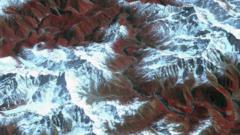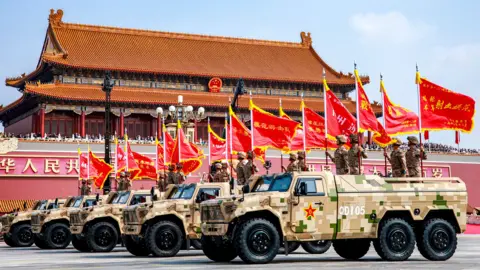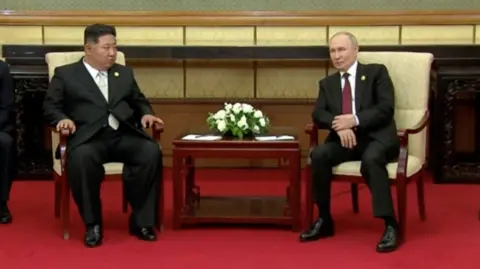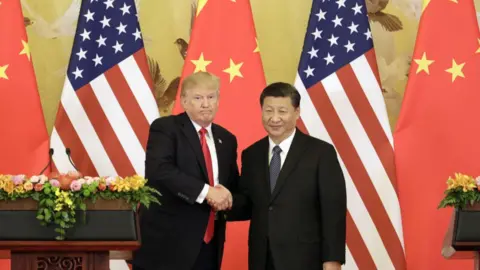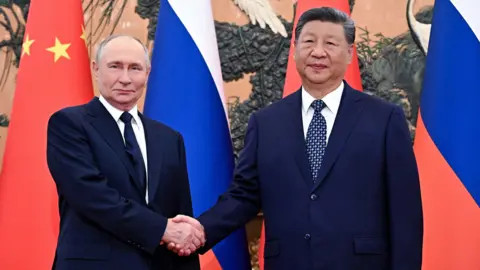Chinese Premier Li Qiang officiated the groundbreaking ceremony for a monumental hydropower project on the Yarlung Tsangpo river, which flows through the Tibetan plateau, on Saturday. This ambitious undertaking has ignited anxiety in India and Bangladesh, as fears mount over its potential to disrupt water supplies and adversely affect local communities downriver. The dam, known as the Motuo Hydropower Station, is projected to cost around 1.2 trillion yuan ($167 billion; £125 billion) and will aim to enhance local prosperity while vowing to prioritize ecological sustainability. Once operational, it is expected to surpass the Three Gorges dam, generating three times more energy.
Experts and officials have raised serious questions about China's ability to manipulate the flow of the Yarlung Tsangpo, which is integral to the water systems in India's Arunachal Pradesh and Assam regions, as well as Bangladesh. A report from the Lowy Institute highlighted that China’s management of these river systems could pose a serious economic threat to India, essentially giving China leverage over its southern neighbors. Pema Khandu, the chief minister of Arunachal Pradesh, voiced his concerns, warning that drastic reductions in water supply could devastate local tribes and their livelihoods.
The Indian Ministry of External Affairs has previously expressed apprehensions to China regarding the implications of mega-dams, stressing the necessity for dialogue and transparency concerning downstream nations' interests. In response, the Chinese government asserted its right to develop the dam while pledging to consider environmental ramifications. Meanwhile, Bangladesh reached out to Beijing for clarification on the project's impact.
The dam is situated in an area renowned for its breathtaking geography, where the Yarlung Tsangpo river takes an intricate turn around Namcha Barwa mountain. The Chinese government envisions enhanced electricity generation, desiring the energy to be transported to more industrialized eastern regions, supported by President Xi Jinping's policy aimed at redistributing electricity from the western rural areas of China to urban centers.
Despite claims of providing green energy and uplifting rural Tibetans, numerous activists argue that such projects exemplify Beijing's exploitation of Tibetan resources while suppressing dissent. Protest incidents against previous hydropower initiatives have resulted in severe crackdowns by authorities, resulting in arrests and injuries among the demonstrators.
The ecological impacts of the construction remain a contentious issue, with fears growing over the flooding of biodiverse Tibetan valleys given the seismic nature of the region. The construction of the dam could pose risks not only to water distribution but also to the natural landscape of Tibet, raising alarms that resonate across the borders into India and Bangladesh.
Experts and officials have raised serious questions about China's ability to manipulate the flow of the Yarlung Tsangpo, which is integral to the water systems in India's Arunachal Pradesh and Assam regions, as well as Bangladesh. A report from the Lowy Institute highlighted that China’s management of these river systems could pose a serious economic threat to India, essentially giving China leverage over its southern neighbors. Pema Khandu, the chief minister of Arunachal Pradesh, voiced his concerns, warning that drastic reductions in water supply could devastate local tribes and their livelihoods.
The Indian Ministry of External Affairs has previously expressed apprehensions to China regarding the implications of mega-dams, stressing the necessity for dialogue and transparency concerning downstream nations' interests. In response, the Chinese government asserted its right to develop the dam while pledging to consider environmental ramifications. Meanwhile, Bangladesh reached out to Beijing for clarification on the project's impact.
The dam is situated in an area renowned for its breathtaking geography, where the Yarlung Tsangpo river takes an intricate turn around Namcha Barwa mountain. The Chinese government envisions enhanced electricity generation, desiring the energy to be transported to more industrialized eastern regions, supported by President Xi Jinping's policy aimed at redistributing electricity from the western rural areas of China to urban centers.
Despite claims of providing green energy and uplifting rural Tibetans, numerous activists argue that such projects exemplify Beijing's exploitation of Tibetan resources while suppressing dissent. Protest incidents against previous hydropower initiatives have resulted in severe crackdowns by authorities, resulting in arrests and injuries among the demonstrators.
The ecological impacts of the construction remain a contentious issue, with fears growing over the flooding of biodiverse Tibetan valleys given the seismic nature of the region. The construction of the dam could pose risks not only to water distribution but also to the natural landscape of Tibet, raising alarms that resonate across the borders into India and Bangladesh.

